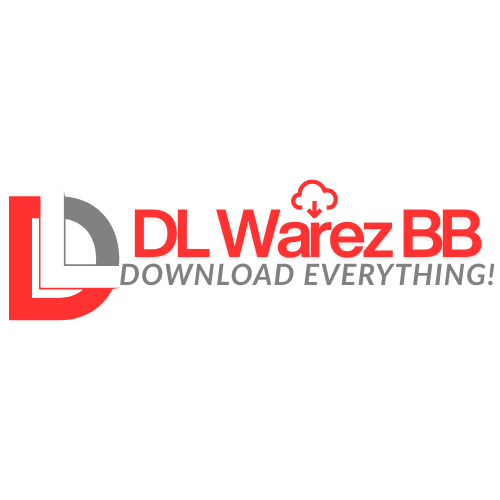3 hours ago
![[Image: d8942a0da7dee2e4f4573dac36357e9d.jpg]](https://i126.fastpic.org/big/2025/1121/9d/d8942a0da7dee2e4f4573dac36357e9d.jpg)
Belief Recode Lab: 7-Day Mindset Reset
Published 11/2025
Duration: 2h 26m | .MP4 1280x720 30fps® | AAC, 44100Hz, 2ch | 1.02 GB
Genre: eLearning | Language: English
Install a new belief in 7 days and track real behavior change.
[b]What you'll learn[/b]
- Install the Zone 10 anchor a two-part system for instant access to heightened subconscious receptivity (inspired by Monroe Institute's Focus 11)
- Write believable autosuggestion lines (≤12 words, present tense, ≥7/10 credible) using Émile Coué's proven method that passes your internal "believability gate"
- Build 60-90 second imaginal rehearsal loops based on Maxwell Maltz's self-image work mental practice that rewires your nervous system before you take action
- Execute a 7-day evidence-based plan with nightly pre-sleep priming (Murphy/Monroe method) and daily behavioral tracking proof over vibes
Requirements
- No prior meditation or self-hypnosis experience required all techniques taught from scratch
- Willingness to practice 5 minutes nightly for 7 consecutive days (consistency matters more than perfection)
- One specific limiting belief you want to test (examples: "I'm not good at public speaking," "I'm bad with money," "I can't stick to routines")
- Notebook or device for daily tracking (30 seconds per day to log believability, confidence, and one behavior)
- Headphones recommended for guided meditation audio (optional but improves experience)
[b]Description[/b]
The Problem
You say the affirmation every morning. "I'm confident. I'm capable."
And then the meeting starts. and you freeze anyway.
You've tried positive thinking. You've written goals in your journal for months. Maybe you've even tried visualization.
And yet the same limiting beliefs keep running your decisions:
"I'm not good at this.""People like me don't succeed at that.""I've always been this way."
Here's why those methods failed: your subconscious rejected the new belief because it wasn't believable.
Saying "I'm a confident leader" when you currently freeze in meetings doesn't rewire anything it just creates cognitive dissonance. Your nervous system knows it's not trueyet, so it rejects the suggestion.
This course teaches a different approach.
The Method
Belief Recode Lab synthesizes six classic consciousness techniques into a single 7-day protocol:
1. Émile Coué's Autosuggestion (1920s)Short, present-tense statements that pass your internal "believability gate" (≥7/10 credibility NOW, not someday)
2. Joseph Murphy's Subconscious Priming (1960s)Installing new beliefs during the hypnagogic window-that drowsy state right before sleep when your critical filter is offline
3. Maxwell Maltz's Imaginal Rehearsal (1960s)Mental practice that builds neural pathways-what elite athletes use, adapted for self-image work
4. Robert Monroe's Focus States (1970s)A two-part anchor (breath + verbal cue + touch) that gives you instant access to deeper receptivity we call it Zone 10
5. Itzhak Bentov's Coherence Training (1970s)A 60-second rhythm exercise that syncs your nervous system before belief work
6. Neville Goddard's "As-If" Living (1940s-60s)Briefly imagining the outcomealready achievedto collapse the gap between current and desired identity
You don't need to study these methods separately. This course integrates them into a single, streamlined practice you can learn in one evening and run for 7 nights.
Why 7 Days?
Seven consecutive nights hits the sweet spot between "too short to matter" and "too long to sustain motivation."
Research on habit formation suggests 7-10 days is enough to establish a new patternifthe behavior is small and the environment supports it.
This course front-loads the support: clear instructions, daily tracking, friction plans, and accountability prompts.
By Day 7, you'll know whether the belief is sticking (proof = behavior change) or whether you need to adjust your line or loop.
Many students run a second 7-day cycle with the same belief to deepen it, or switch to a new belief once the first one feels automatic.
"Proof Over Vibes" Approach
This course doesn't ask you to "trust the process" or "feel the shift."
It asks you to track behavior.
Every day, you log three metrics:
Believability score (1-10): How credible does your new belief feel today?
Confidence score (1-10): How confident are you that you can act on this belief?
One specific behavior: What did youdotoday that aligns with the new belief?
Example: Day 1 Day 7 for "I speak clearly in small groups"
Day 1: Believability 6, Confidence 5, Behavior: "Made eye contact with one person during standup"
Day 7: Believability 8, Confidence 7, Behavior: "Volunteered an idea in the team meeting without rehearsing it first"
That's proof not "I feel more confident" (subjective and fleeting), but "I did something I wouldn't have done before" (observable and repeatable).
What This Course Is NOT
Not therapy or clinical treatment. This is skill-building for adults who want to experiment with belief change. If you're dealing with trauma, severe anxiety, or depression, work with a qualified therapist.
Not "manifestation" or Law of Attraction. This course teaches behavioral rehearsal and attention training-skills that change how youact, which creates new results. No quantum woo, no vision boards.
Not a quick fix. You'll learn the techniques in a few hours, but meaningful change requires consistent practice. The 7-day experiment is the minimum viable test.
Not a substitute for effort. These methods make behavior changeeasierby aligning your self-image with your goals, but you still have to take action.
WHO THIS COURSE IS FOR
This course is for you if:
• You've tried affirmations or "positive thinking" and they felt fake or didn't stick
• You're sick of personal development content that's all inspiration and no instruction
• You want to test belief change as askill(like learning a language) rather than hoping for a magical mindset shift
• You're willing to commit 5-10 minutes per night for 7 days and track your results honestly
• You prefer "show me the method, I'll decide if it works" over "trust me, this will change your life"
• You want a structured, evidence-based experiment you can run starting tonight
This course is NOT for you if:
• You're looking for therapy or treatment for mental health conditions (this is educational, not clinical)
• You want a passive experience (this requires nightly practice and daily tracking)
• You're skeptical of any self-directed consciousness work and won't engage in good faith
• You need instant results (you'll seesomeshift in believability within 2-3 days, but real behavior change takes the full 7 days minimum)
• You're unwilling to practice self-hypnosis or focus-state work (Zone 10 is foundational to this method)
INSTRUCTOR BIO
This course synthesizes techniques from six established traditions in consciousness training and self-hypnosis. The methods taught here are not original-they're adaptations of proven techniques from:
Émile Coué (French psychologist, pioneer of autosuggestion, 1920s)
Joseph Murphy (author ofThe Power of Your Subconscious Mind, 1960s)
Maxwell Maltz (plastic surgeon, author ofPsycho-Cybernetics, 1960)
Robert Monroe (founder of the Monroe Institute, developer of focus states, 1970s)
Itzhak Bentov (biomedical engineer, author ofStalking the Wild Pendulum, 1977)
Neville Goddard (mystic and teacher of imaginal techniques, 1940s-60s)
This course distills those methods into a single, repeatable 7-day protocol. No fluff. No filler. Just the techniques, the worksheets, and the tracking system.
Educational Positioning: This is not therapy or coaching. It's training in a specific skill set the same way you'd take a course in public speaking, project management, or time management. You're learninghowto change beliefs systematically, not hiring someone to do it for you.
What You'll Get
Video Training:
9 sections, 54 lectures
2 hours of instruction
Screen-friendly pacing
Downloadable Resources:
7 PDF worksheets (interactive + printable)
2 guided meditation audio files (MP3)
Zone 10 Quick Card (bedside reference)
Lifetime Access:
Watch at your own pace
Revisit anytime
All future updates included
FREQUENTLY ASKED QUESTIONS
Q: Do I need meditation experience?A: No. Zone 10 is taught from scratch. If you've never meditated, use Track A (11 minutes). If you already know Zone 0 (hypnagogic state), use Track B (7 minutes).
Q: What if I fall asleep during the pre-sleep routine?A: That's fine and often ideal. The routine is designed for the hypnagogic window (right before sleep), so falling asleep means your subconscious received the belief while your critical filter was offline. If you want to stay awake through the full loop, practice earlier in the evening.
Q: What if I miss a night?A: One missed night is fine just resume the next night. Two missed nights means you need a friction plan (identify the obstacle and design a workaround). Three+ missed nights means the routine is too long or the belief isn't compelling shrink it.
Q: Can I work on multiple beliefs at once?A: Not recommended for your first cycle. One belief, 7 nights, full focus. Once that belief stabilizes (9-10 believability + automatic behavior), start a new 7-day cycle with a different belief.
Q: Is this therapy?A: No. This is educational content teaching self-directed belief change as a skill. It's not a substitute for therapy, counseling, or medical treatment. If you're dealing with trauma, severe anxiety, or depression, work with a qualified professional.
Q: How is this different from affirmations?A: Affirmations often fail because they ignore the believability gate. Saying "I'm wealthy and successful" when you're broke creates dissonance, not change. This course teaches you to write lines youalready believe at least 70%, so your subconscious accepts them. You expand the belief over time as your behavior confirms it.
Q: How is this different from visualization?A: Visualization is often passive (imagine the outcome and hope). Imaginal rehearsal is active behavioral practice you're mentally installing the neural pathways for a specific action you'll take tomorrow. It's closer to what athletes do (mental reps) than what LOA teaches (attracting outcomes).
Q: Can I use this for physical goals (weight loss, fitness)?A: Yes, but frame it as abehaviorbelief, not an outcome belief. Don't use "I'm fit and healthy" (outcome). Use "I choose movement I enjoy daily" (behavior). The loop shows youdoingthe workout, nothavingthe body.
Q: Will this work for everyone?A: No method works for everyone. This works best for people who: (1) commit to 5-10 min/night for 7 nights, (2) track behavior honestly, (3) engage in good faith. If you're highly skeptical or won't do the practices, this won't work not because the method is flawed, but because belief change requires engagement.
FINAL NOTE
This course doesn't promise miracles. It promises a method.
If you engage honestly, write a believable line, run the loop nightly, track your behavior you'll see whether it worksfor youwithin 7 days.
That's the deal.
No hype. No fluff. Just the experiment.
Let's go.
Who this course is for:
- This course is for you if you've tried affirmations or "positive thinking" and they felt fake or didn't stick, if you're sick of personal development content that's all inspiration and no instruction, and if you want to test belief change as a skill (like learning a language) rather than hoping for a magical mindset shift. You're willing to commit 5-10 minutes per night for 7 days and track your results honestly, you prefer "show me the method, I'll decide if it works" over "trust me, this will change your life," and you want a structured, evidence-based experiment you can run starting today.
More Info
![[Image: WA0pV3E2_o.jpg]](https://images2.imgbox.com/ac/51/WA0pV3E2_o.jpg)
![[Image: signature.png]](https://softwarez.info/images/avsg/signature.png)







